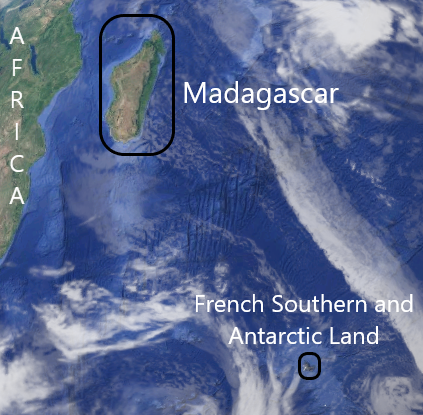AP Environmental Science
What is Island Biogeography?
3 min read•Last Updated on July 11, 2024
Cody Williams
Cody Williams
Island Biogeography
Island biogeography focuses on the biodiversity on an island 🗾 and how it changes over time 📈. The CED talks about island biogeography and its connection to evolution and specie survival. If you want to learn more make sure to check out this video covering 🎥 biodiversity and ecosystem services.
Different factors affect the biodiversity of an island 🗾 in different ways. The three main factors that impact the biodiversity on an island are the size of the island 🔸 🔶 , the distance from mainland↔️, and human interaction 👨👩👧👦 .
When thinking about island biogeography, we are often comparing two islands and how their biodiversity differs. Let's look at two islands as I explain the factors that impact island biogeography. The two islands that we will look at are
Madagascar and French Southern and Antarctic Land. It might help if you look up both on Google Maps 🗺 . Below is an image of both islands.

Size of the Island 🔸 🔶
The size of the island is one of the factors to consider when looking at biodiversity. The bigger the island, the more species can live on the island. There are more resources and less competition.
However, the smaller the island, the less species 👇 🐸 can live on the island. There will be less resources 👇 🌾 and more competition 👆 🏆.
Hopefully, you can see the connection between evolution and natural selection and island biogeography. When the island size is small, more competition 🏆 takes place and thus natural selection. However, a species may adapt and develop new traits to survive on a small island 🏝 . Thus, the species will evolve based on the most favorable traits. 👍
Based on our example, the Madagascar will be able to hold a greater variety of species compared to the French Southern and Antarctic Land. Madagascar has A LOT more resources.
Distance from Mainland ↔
The distance an island is away from mainland can impact how new species are introduced 👋 to an island.
For example, if an island is close to the mainland, birds can more easily fly to that island rather than one far from the mainland. 🐦 Distance from the mainland, ultimately determines whether new species will be introduced to an island aside from human interruption.
In our example, Madagascar is more likely to get new species from the mainland. It isn't impossible for new species to get to the French Southern and Antarctic Land, but it is highly unlikely.
Human Interaction 👨👩👧👦
Human interaction is something that impacts island biogeography on islands such as Hawaii and Japan. Human interaction usually decreases biodiversity. When humans begin interfering with an environment, they usually start to take resources and start commercializing it with houses. 🏡 This usually has a negative impact on biodiversity, because animals can't survive when their habitats are destroyed 💀 .
However, humans can introduce new species to an island. This can bad as well. If an invasive species 😼 is introduced, it can start overtaking other species. Hopefully, they are taking over or killing off a keystone or foundation species, because that can lead to environmental collapse in that area.
When comparing our two islands, Madagascar has greater human influence 👨👩👧👦 👨👩👧👦 👨👩👧 than the other island. However, Madagascar has distance to mainland and size on its side, so Madagascar would most likely have a greater biodiversity 🐸 🐯 🐨 🐍 🐆
Additional Resources
If you want more information make sure you check out this video replay as an 🎥 Introduction into Island Biography and other Fiveable resources.